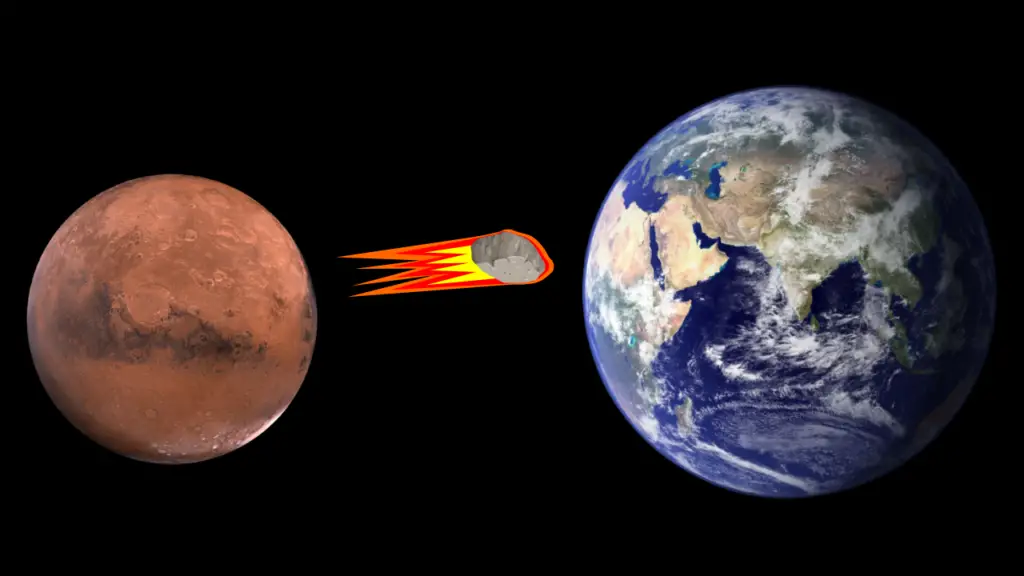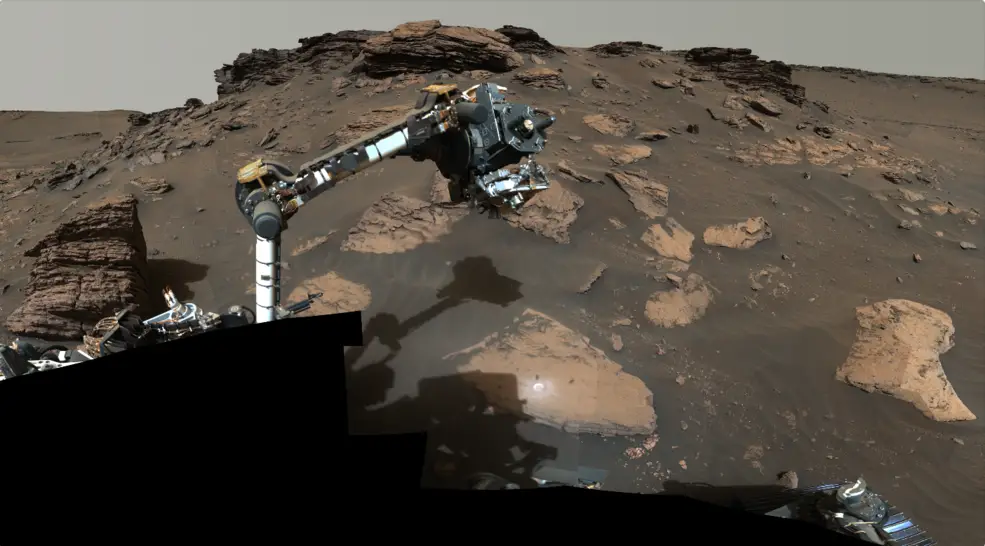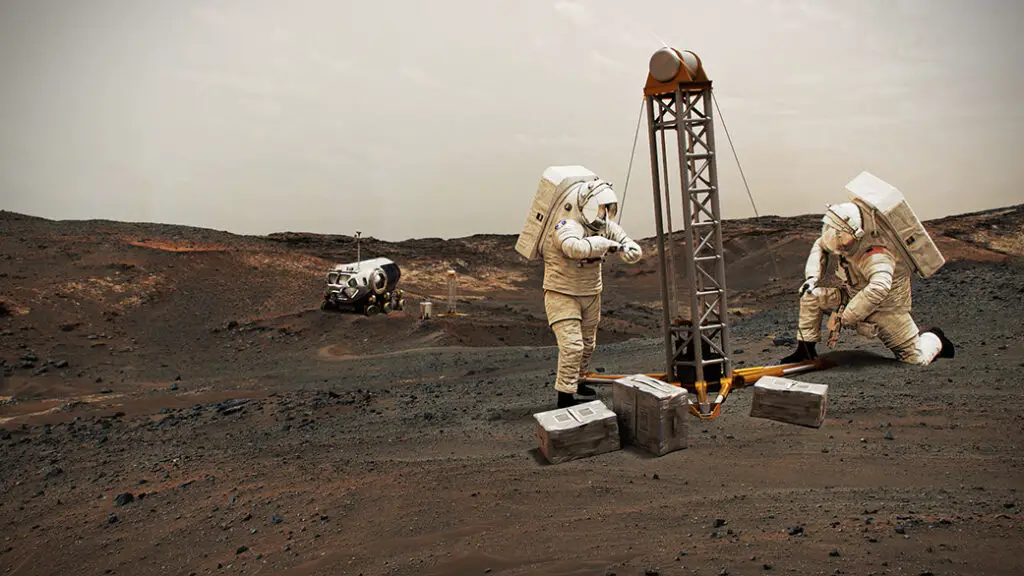Mars is a planet that appears lifeless based on our current exploration of the planet. But is Mars completely lifeless or is there life on Mars? To answer this question, space agencies have sent several orbiters and rovers to explore the red planet and provide us with answers.
These rovers and orbiters have conducted several studies on Mars in search of alien life.
Based on these studies, we could sense that Mars may have provided a suitable environment to sustain life some time ago. But have we verified the evidence of life on Mars? This article will enlighten you on the possibilities of life on Mars.
How did Ancient Astronomers attempt to find life on Mars?
Mars, the planet that holds the future of humans in deep space have captured our interest centuries ago. After Galilee Galileo spotted the planet with his advanced telescope in 1610, ancient astronomers became more interested in studying the red planet and unveiling its mysteries. Ancient astronomers have different suggestions about the existence of lifeforms on Mars.
One of the ancient astronomers fascinated by the existence of Life on Mars is Sir William Herschel. In his 1784 publication, Sir William Herschel speculated that the dark areas on the Martian surface are oceans, while the lighter areas are land. Sir Herschel went ahead to suggest that Mars is inhabited by intelligent beings whom he believes to live in an environment similar to earth.
Sir William Herschel is not the only ancient astronomer that believed in the presence of extraterrestrial life on Mars. In 1854, William Whewell finalized that Mars’s surface is largely made up of green seas, while the martian lands are red. William Whewell even imagined the presence of extraterrestrial life on Mars.
Despite the speculations made by ancient astronomers in an attempt to find life on the red planet, modern technologies enabled us to move closer to Mars and learn actual facts about the planet.
Finding Life on Mars with Modern Technologies

Unlike the ancient astronomers that relied on telescopes to study the red planets, modern scientists decided to take a bold step closer to the red planet. After a series of failed space missions to explore mars, Marine 4 became the first spacecraft to successfully conduct a flyby mission on Mars on July 15th, 1965. The success of this mission enabled astrobiologists to know that we are closer to finding life on Mars.
On July 20th, 1976, NASA´s Viking 1 became the first spacecraft to successfully land on Mars. The lander operated on Mars for about 2245 Martian Solar days which is equivalent to 2307 Earth days. During these years of operation, Viking 1 captured more detailed images of the red planet. These images countered the previous assumption held by ancient astronomers about life on Mars.
Scientists and astronomers studied these images closely in search of alien life. The martian environment captured in the image has a similar resemblance to a deserted part of the earth. The quest to find life on Mars increased after the Viking 1 lander mission. After the success of Viking 1, NASA launched Vikings 2 to continue space exploration.
During these space missions to Mars, we were not able to return a sample from the red planet. Scientists are optimistic that they will unveil the evidence of past life on mars if they could find a Meteorite that came from the planet.
Is there Life on Mars?
In 1984, scientists found ALH84001, a meteorite in the Allan Hills ice field of Antarctica. After studying the meteorite for a while, the scientists concluded that ALH84001 actually came from Mars 13,000 years ago before it was discovered. The meteorite is an igneous rock that weighs 1.9kg(4.2 pounds). In addition, scientists believed that it have been crystallized from Martian Magma about 4.5 billion years ago.
However, it might has began its journey to earth after asteroids or meteoroid impacts on Mars. Hence, scientists believed the meteorite to be about 4.5 billion years old. After its discovery, ALH 84001 was not closely studied until 1994, when scientists were able to trace Mars’s origin from the meteorite. A NASA research team led by David McKay began to work on ALH84001 in 1994.
The primary aim of this study is to uncover the facts behind the meteorite. From this study, the scientists noticed the presence of polycyclic aromatic hydrocarbons (PAHs) on ALH84001. McKay and his team also noticed the presence of carbonate globules on the meteorite.
Keep in mind that carbonate globules are closely related to a common bacteria on Earth. The igneous rock contains molecules inside. However, it does not have molecules on its surface. In August 1996, David McKay concluded that the meteorite is evidence that primitive life may have existed on Mars in the past. This discovery changed our view of life on Mars.
After McKay’s research, other Scientists developed a unique interest in studying life on Mars. NASA and other space agencies became more curious to find microbial life on Mars. To continue the search for Microbial life on the Martian surface, NASA launched the Curiosity Rover on November 26th, 2011. NASA also intended to use the Curiosity Rover to determine the evidence of past life on Mars.
Could this discovery be Evidence of Past Life on Mars?
On August 6th, 2012, the Mars Science Laboratory mission Curiosity Rover landed on Mars Gale Crater. The Rover continued to explore the surface of the red planet with the hope to find traces of past life on Mars.
After the Curiosity rover successfully landed on Mars, it began to explore the planet to accomplish its missions. Curiosity is specifically designed to find evidence of past life on Mars. The following discoveries made by the Curiosity Rover on Mars may be evidence of past life on Mars.
1. Finding evidence of ancient water on Mars
On September 27th, 2012, the curiosity rover discovered evidence of an ancient streambed in the Gale Crater. Hence, this discovery made NASA’s scientists suggest that the ancient streambed may be direct evidence of the ancient flow of water on Mars.
2. Finding Organic Carbons in Mars Rocks
The Curiosity Rover arrived on mars with several advanced instruments for the mission. One of its fascinating instruments is the Sample Analysis at Mars (SAM) instrument. In addition, the Curiosity rover used this instrument to drill several samples from Mount Sharp and other rocks around its surroundings.
From these collected samples, NASA scientists were able to find organic molecules. Keep in mind that organic molecules are known as the building blocks of life. Although scientists have revealed that this finding is not evidence of past life on Mars, it proved that life may have attempted to exist on the red planet in the past.
3. An Evidence of Think Atmosphere and Excess Water on Mars Billions of Years ago
The Curiosity rover used its SAM instrument to discover that Mars’s atmosphere was once richer and heavier than its present status. The rover discovered that Mars has heavier forms of carbon, hydrogen, and argon, which proves that the red planet has lost most of its formal atmosphere and water.
Scientists believed that this loss may have started from the uppermost part of the atmosphere. The loss of Mars’ original atmosphere is the reason why the planet has remained a hostile planet until this day.
4. A Habitable Place for Life
Curiosity Rover discovered that ancient Mars had nitrogen, oxygen, sulfur, carbon, and phosphorus, which are the right chemistry to sustain microbes. Through this analysis, scientists discovered that ancient Mars has the right ingredients to sustain life. However, further space missions to Mars will help to upgrade our knowledge about the planet. The Curiosity rover is still exploring Mars, and we hope it will make more discoveries before it finally retires from its duties.
How NASA Perservance Rover has advanced the search for life on Mars?
On February 18th, 2021, the Perseverance Rover successfully landed on Mars to advance our research on Mars. NASA revealed that the key mission of the Perseverance Rover is to find evidence of ancient life on Mars. In addition, the rover has collected several samples, which will help scientists to learn more about the red planet.
NASA is planning a space mission with ESA to recover these samples and return them to earth. Once these samples are recovered, scientists will conduct more research on them to understand the red planet and prepare for future space missions to Mars.
Conclusion
Up to date, no concrete evidence about the existence of ancient life on Mars has been discovered. However, scientists are not giving up on the search for microbial life on Mars. Before space agencies will commence the manned missions to Mars, they must have unveiled more mysteries and understand why Mars became a hostile planet for living organisms in this present era. Do you think we will find evidence of past life on Mars in this decade?






I believe planet Mars has life underneath and we should also note that signs of water has been discovered by mars reconnaissance orbiter and where there’s water life is very much likely to be there,
Thank you for your contribution. You can always return to the blog to read more interesting articles about the universe.
🤔 Why is this hard to believe? Most of it sounds more like speculation than truth.